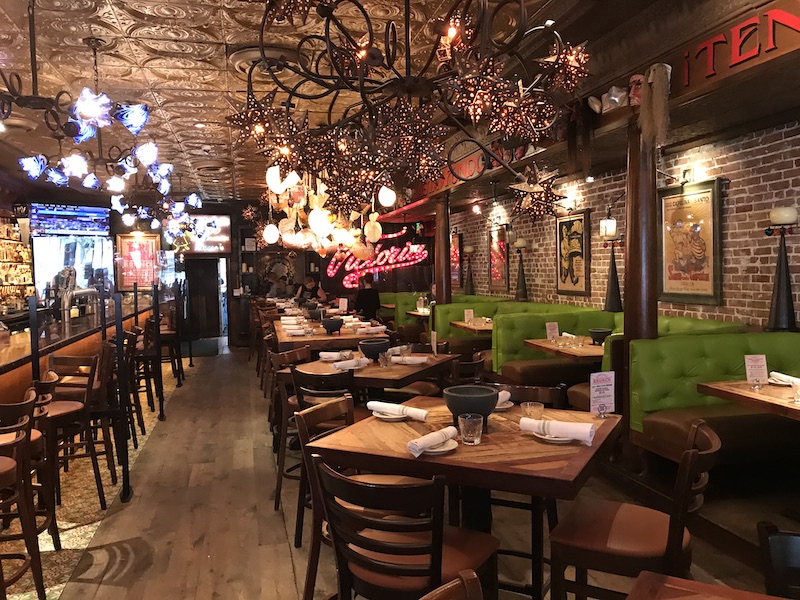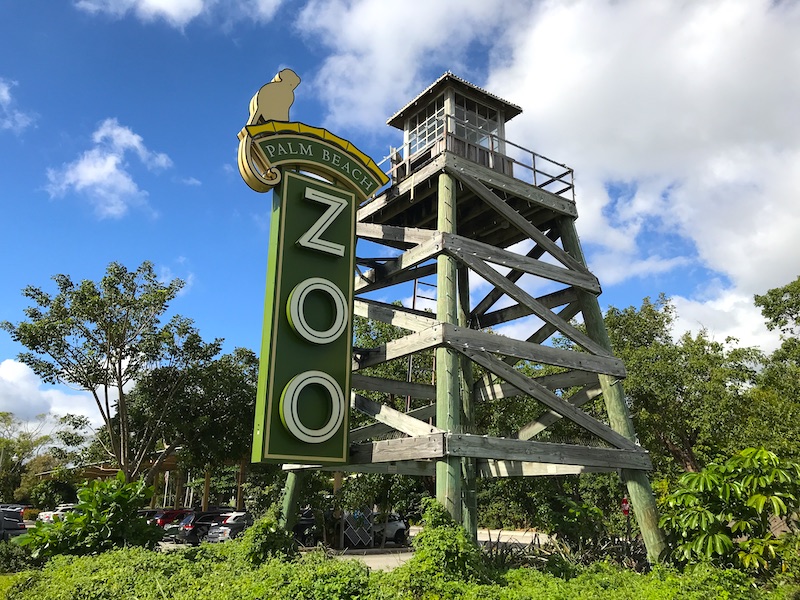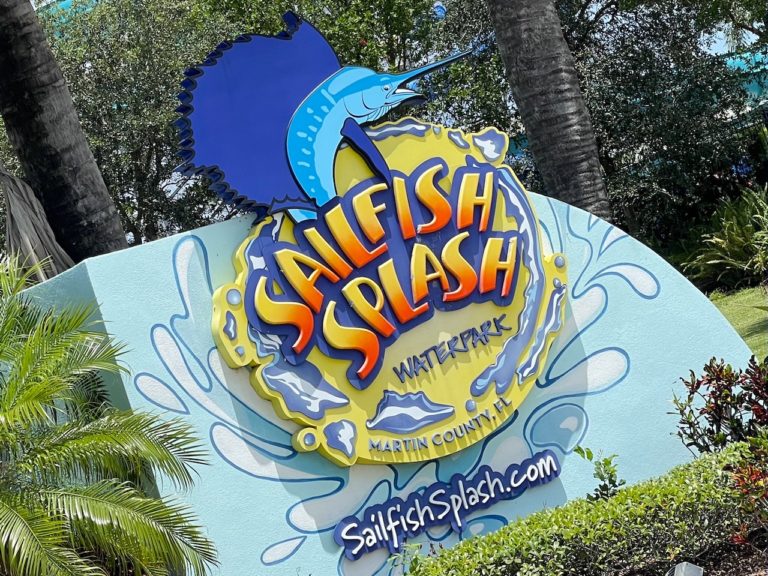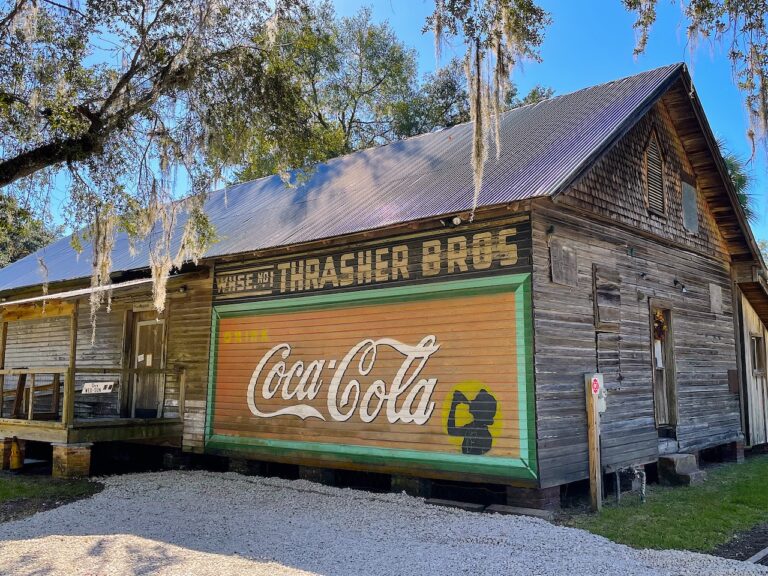As soon as we walked into the entrance of The Palm Beach Zoo, we felt as if we were walking into a lush tropical garden filled with beautiful pathways and exotic animals all around us. The Palm Beach Zoo is inviting because it is beautifully landscaped. Because of its size, it feels more like a stroll through a beautiful park.

The Palm Beach Zoo & Conservation Society is a non-profit zoological organization located at Dreher Park in West Palm Beach. The zoo houses more than 550 animals, many of them endangered, within 23 acres of lush tropical habitat. Its mission is to protect wildlife, and the wildlife habitat, and to inspire others to value and conserve the natural world.
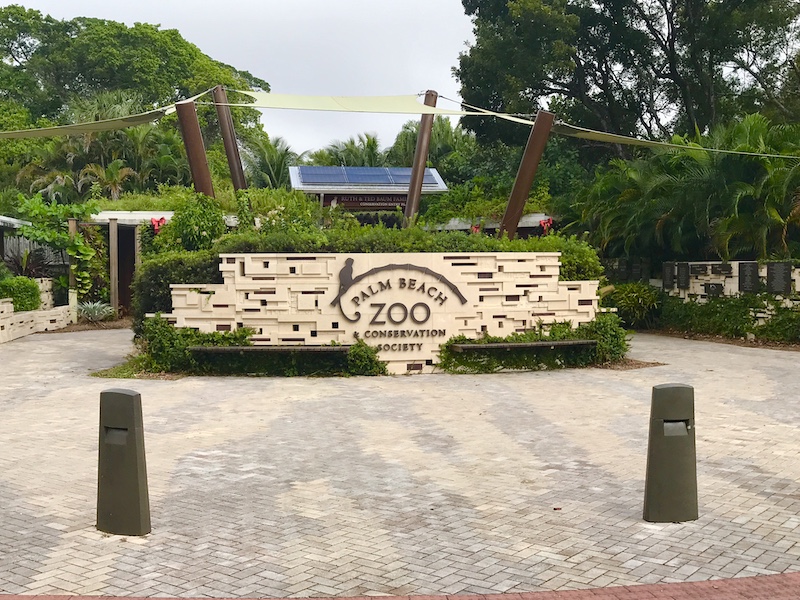
Starting as just a petting zoo back in the 1950s, with a few barnyard ducks, chickens, rabbits, and one goat named Pepita, the Palm Beach Zoo has flourished and grown to be one of the best small zoos in the nation.

The zoo is broken up into four regions: Florida Wetlands, Tropics of the Americas, Asia, and The Islands.
Florida Wetlands
We started at the Wetlands. The Florida Wetlands residents include species that are native to South Florida – including alligators, bears, panthers, and exotic birds such as the flamingo.
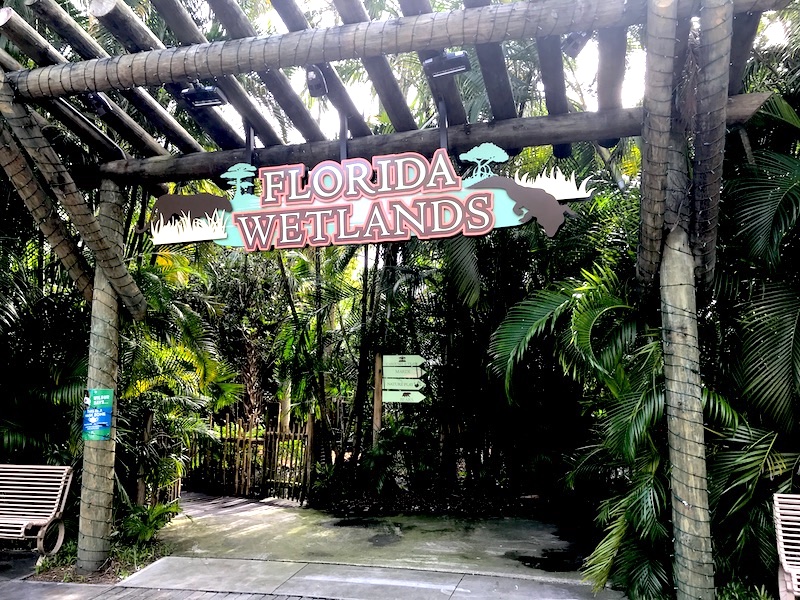
These gorgeous pink South Florida birds are real showstoppers at the Flamingo Encounter. So we grabbed a bench to peacefully watch them interact together and fish at the bottom of the pond.
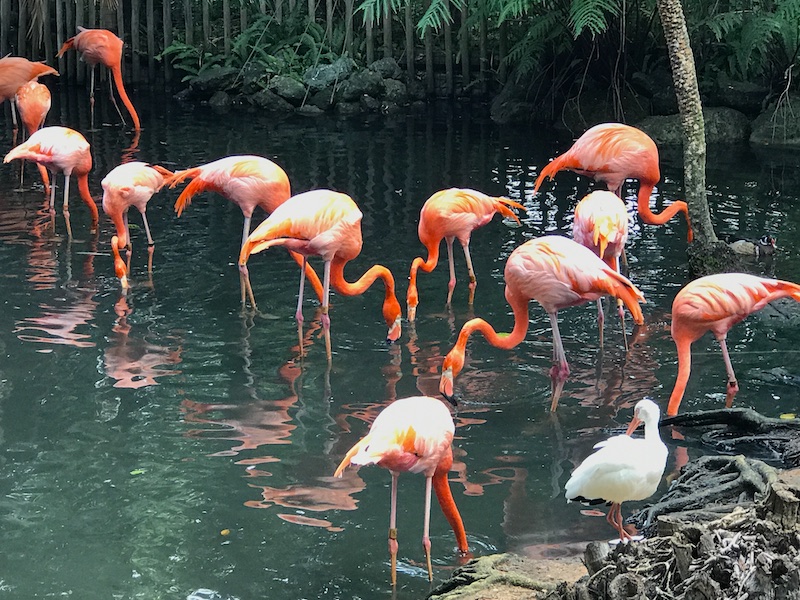
We next checked out the John and Carole Moran Panther Prowl habitat and met Sassy, the zoo’s new Florida panther. Fewer than 100 Florida panthers are estimated to live in the wilds of South Florida today.

Mardi’s Marsh is home to one of ten white alligators in the world. Mardi (named after Mardi-Gras) was located in Louisiana. Mardi has a rare genetic mutation called leucism. He lacks pigment in his skin but is not an albino. White alligators, because they lack skin color, and sunburn easily and can’t survive in the wild as they can’t camouflage themselves.
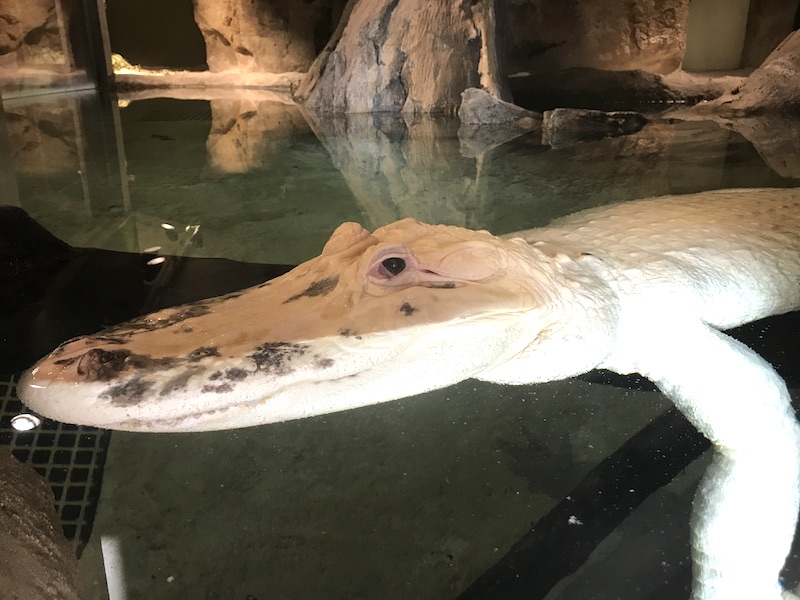
Lewis & Clark, the zoo’s black bear brothers, are North American black bears that came to the zoo in May 2001 from the state of Maine. Their mother was hit by a car and killed in Edmonton, Maine. At the time, the cubs were thought to be about four months old.

Tropic of the Americas
Tropics of the Americas is a 3-acre jungle path and complex that immerses guests in the animals, plants, and culture of a New World rainforest. You’ll encounter animals such as jaguars, monkeys, giant anteaters, bats, birds, snakes, and more.
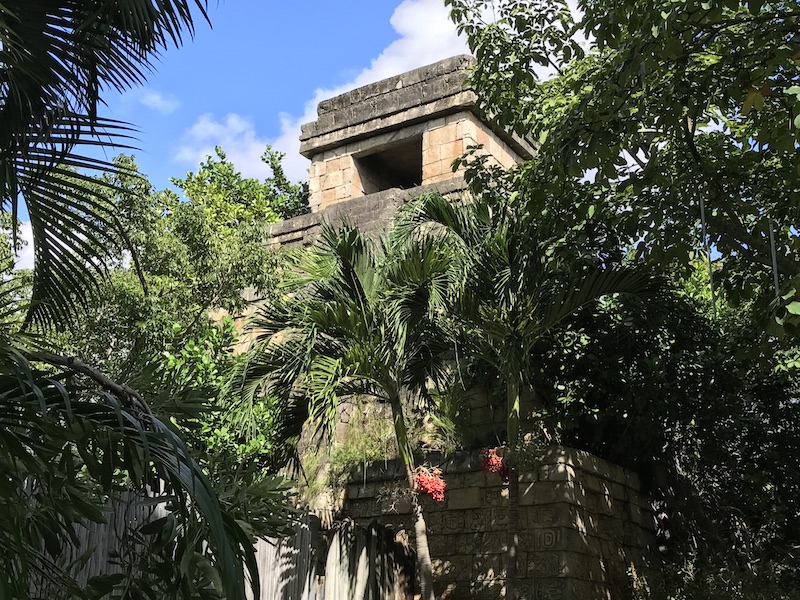
We felt like we had been whisked to South America as we watched the zoo’s family of Capuchins literally monkeying around in their vast green space! Tufted Capuchins are relatively common in the forests and rainforests of South America.

Next, we viewed the jaguar exhibit, which was created during the 2003 redevelopment. It is renowned as one of the best in the country. The jaguar is a compact and well-muscled animal. It is the largest cat native to the Americas and the third-largest in the world, exceeded in size by the tiger and the lion.
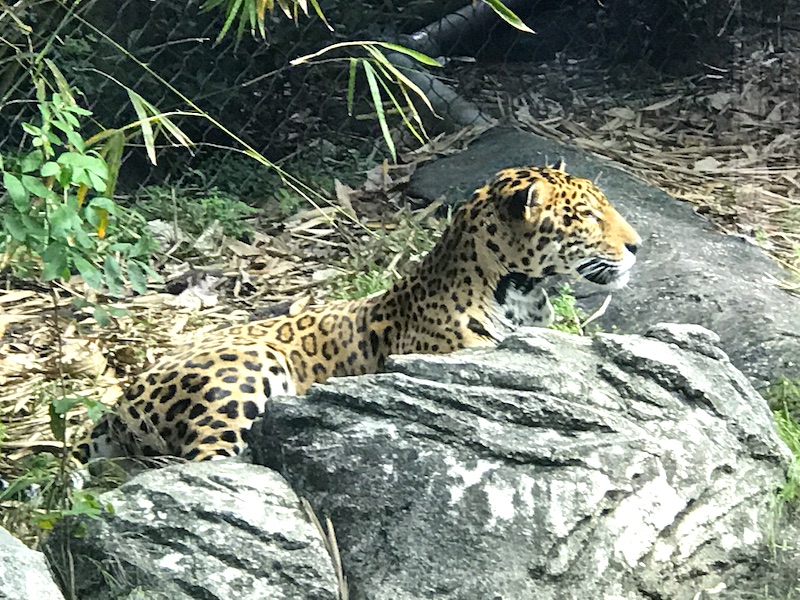
The Komodo dragon was just moved from The Islands to the Tropic of the Americas area. The Komodo dragons are the largest, heaviest lizards in the world. Satu is the Palm Beach Zoo’s Komodo and is now just across the way from the jaguars in Mayan Plaza.
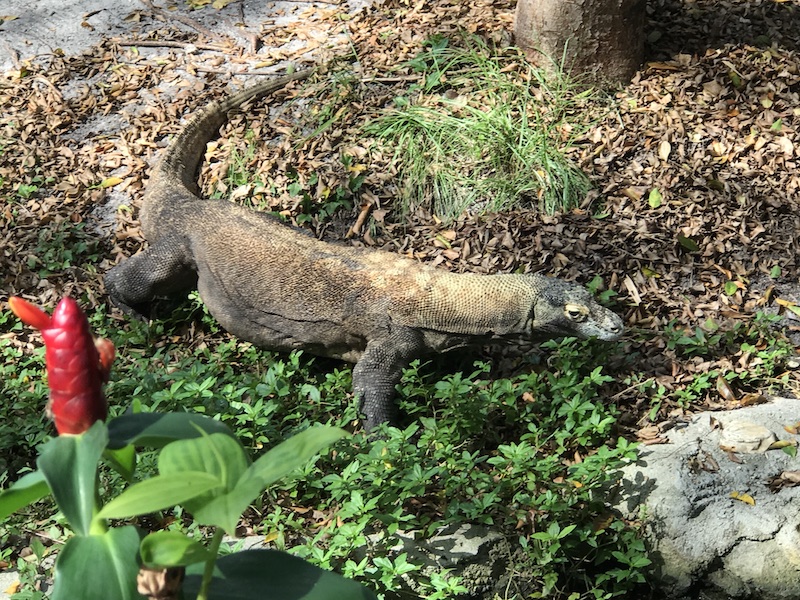
Asia
Next, we visited the lush jungles of Southeast Asia. Tiger Falls houses Malayan tigers. Three tiger cubs that were born here at the Palm Beach Zoo were prowling and playing in their tropical tiger habitat. Here, they experience a waterfall, running stream, bathing pool, banyan trees, bamboo, and palms.
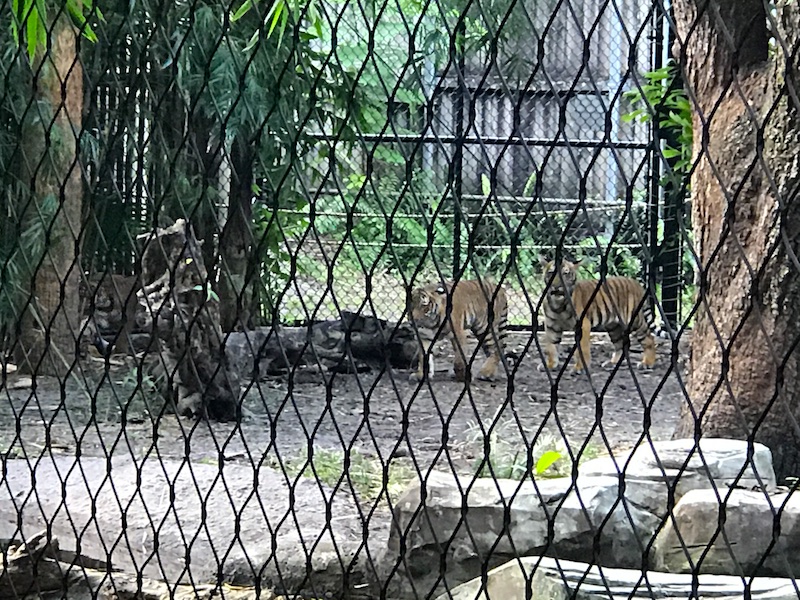
The Islands
This section of the zoo showcases different species of animals from islands all over the world.

The Islands of the World region has two Queensland Koalas named Oz and Katherine. The zoo offers a “Koala Encounter” which allows visitors to ask zoo staff questions, learn, and get a little closer to a koala. All koalas in the United States belong to Australia and are on loan from that nation. Because of this, you cannot touch the animals but you can get close for pictures.

Head into this loft area filled with lorikeets – colorful parrots from Australia – where you can watch them fly and hang out all around you. Purchase a small cup of nectar that attracts these featured friends to land on your hand, arm, shoulder, and even your head to get a drink of that sweet nectar. You’ll have a blast feeding these curious little parrots.

But, that’s not all…
With shops, restaurants, interactive adventures, a carousel, and even a large fountain to play in on hot Florida afternoons, the Palm Beach Zoo provides a full day of activities.

Wildlife Carousel
Hop aboard and take a spin on the magnificent Wildlife Carousel at Palm Beach Zoo, which provides unforgettable experiences for children and a bit of nostalgia for grown-ups.

Cool off in the fountains
If you happen to visit on a hot Florida afternoon, the zoo has a large fountain that kids or adults can play in. Bring a change of clothes. Changing tents are located nearby, and there’s plenty of seating if you’d rather relax while your kids splash around.

Nature Play Pavillion
The Nature Play Pavillion is a hands-on, interactive natural play space, located in the Florida Wetlands area. The Pavillion engages children of all ages in imaginative and creative outdoor play. Zoo guests will have the opportunity to explore such features as; climbing like a cat, balancing like a monkey, crawling like a tortoise, splashing like an otter, and playing with nature.
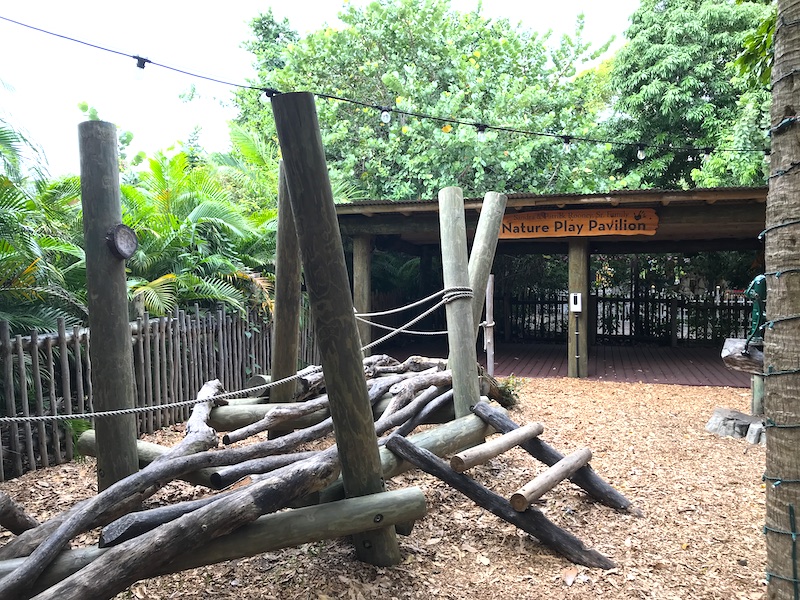
Lunch or Snacks
When it’s time to eat, stop by the Tropics Café. Relax and enjoy lakeside dining. They offer full-service dining, including beer and wine. Concession stands are also available throughout the park, selling things like hot dogs, cold drinks, and ice cream.

Hours of Operation
Open daily from 9 a.m. to 5 p.m.
Regular Admission
- Adults $24.95
- Seniors (60+) $22.95
- Children (3-12) $18.95
We spent about 3 hours at the zoo. I would recommend that you walk around at least twice. There were many animals that weren’t in view the first time around that were visible on the second trip. I was able to get photos that I missed before.
Another facility we enjoyed close by that is worth a visit is the Busch Wildlife Sanctuary in Jupiter. There, families can see animals like foxes, panthers, bears, and exotic birds for just a donation. It is a nonprofit, educational-based care facility for injured animals.
Rocco’s Tacos and Tequila Bar
The Tropics Cafe at the zoo was an option for lunch, but we decided to drive over to Clematis Street to have lunch at Rocco’s Tacos. Rocco’s Tacos offers a true taste of Mexico within a fun casual environment. Many folks have good reviews about Rocco’s. I thought the tacos were mushy and tasteless. My margarita seemed watered down and also tasteless. The service was so slow although our waiter was very personable. With all that being said, we enjoyed sitting near the sidewalk and the ambiance of the restaurant.
